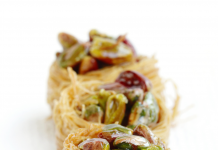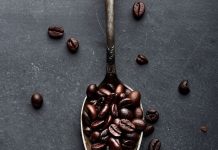We all love giving an in-depth and pretentious order for coffee every morning when we grab a big mug of our daily java. The level of sophistication in outlining how hot, extra foamy, vanilla-flavored coffer we want with oat milk only is something we all can relate to. So, what can be more elevating in terms of sophistication? A dry cappuccino, perhaps? Let us have a read about it.
What is Dry Cappuccino?
If you ever hear anyone ordering a dry cappuccino, do not let your eyes boggle with astonishment and your face reflect that you think the person you just heard is bonkers. This is because dry cappuccino is truly a thing! Yes, we know coffee is a hot beverage made of milk and water; nonetheless, the crazy variations introduced by baristas have always kept coffee lovers on edge.
So, what is dry cappuccino? As opposed to a classic or a wet cappuccino made with equal parts of espresso, milk froth, and steamed milk, the dry cappuccino has a slightly lesser amount of steamed milk. Even with less steamed milk, it has a thicker layer of milky foam on the top. Therefore, the difference lies only in the amount of steamed milk.
History
First, making an appearance in northern Italy during the 1930s, the earliest forms of cappuccino were not so diverse. The Viennese style coffee entailing whipped cream with some chocolate or cinnamon was the only cappuccino popular at that time. The practice of adding steamed milk was introduced a lot later, and it was only after the 1950s that cappuccino was made with espresso.
The amount and texture of the steamed milk became significantly important for the coffee lovers to enjoy the characteristic taste of cappuccino they love. With time, variants of cappuccino became popular, and the espresso shot with less steamed milk came to be known as dark, scuro, or dry cappuccino.
Nutritional Value
According to eat this much, the standard serving size (8 oz.) of cappuccino contains the following nutrition:
- 25 calories
- Carbohydrates 4 grams
- 0 fat
- 3 grams of sugars
- 0 mg of iron
- 35 mg of sodium
- 800mg of calcium
- 0 gram trans fatty acids
Health Benefits
- Protects our heart from various ailments
- Significantly decreases the risk of stroke
- Plays a significant role in preventing type 2 diabetes
- Might prevent Alzheimer’s
- Helps in the digestion
- Lowers the risk of developing gallstones
- Burns body fat
- Boosts the health of our teeth
- Prevents and aids in elevating headache
How to Make Dry Cappuccino
If you have been tempted enough to try making dry cappuccino at home, here is a step-by-step guide:
- Pour a shot of espresso into your espresso machine and fill a cup.
- Fill a pitcher up to three-fourths of the capacity with whole milk.
- Use the steam wand from your espresso machine and dip it in the milk pitcher. Let the milk become steamy and rise to the top.
- Once the milk is steamed at about 150°F, pour a small amount of steamed milk in your espresso and top it off with the froth!





